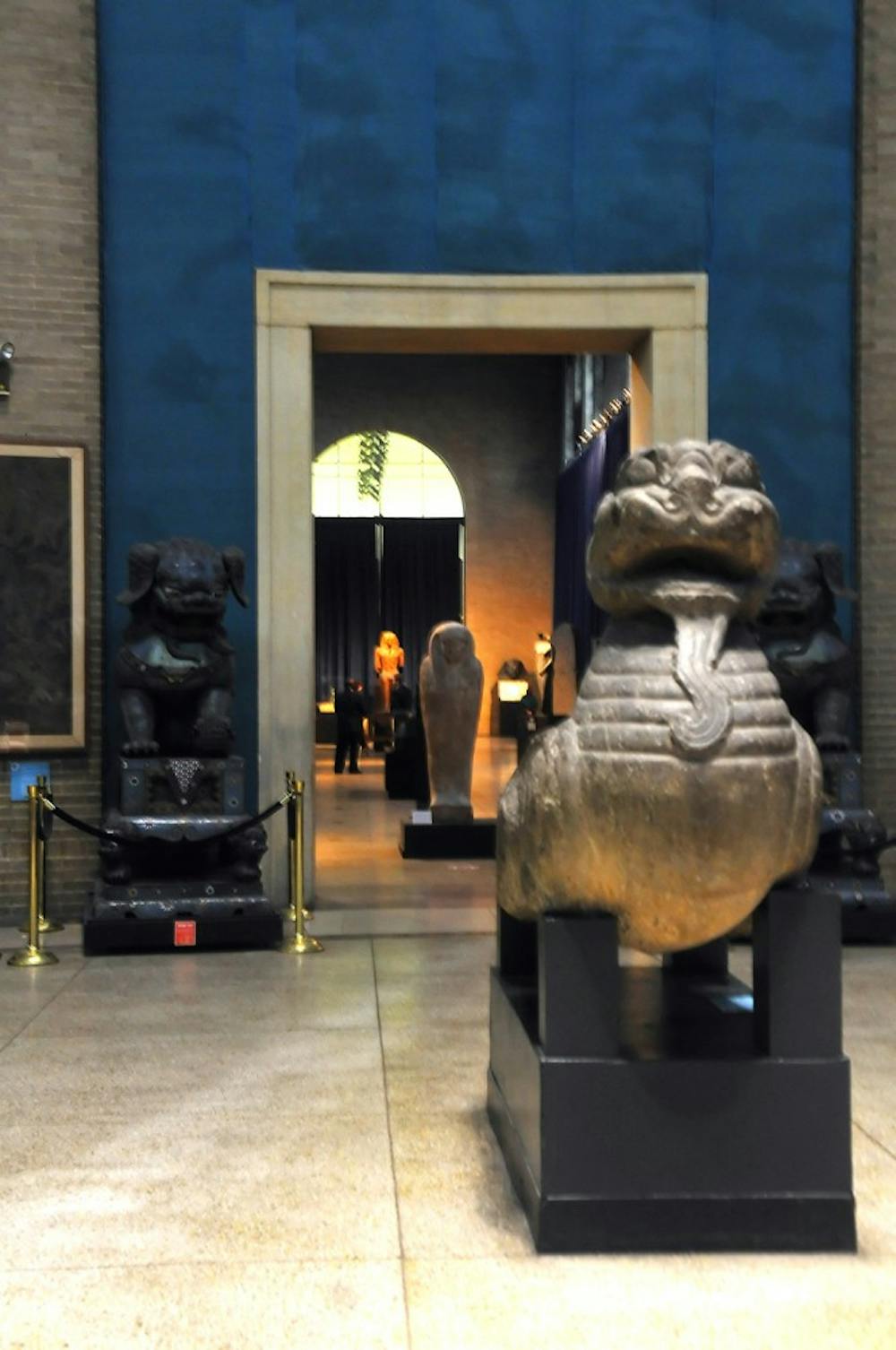
Despite the Chinese government’s decision to recall key artifacts from the “Secrets of the Silk Road” exhibit, University of Pennsylvania Museum of Archaeology and Anthropology officials believe their special renovations were not in vain.
Last Saturday, the Silk Road exhibit opened without any artifacts from China. The decision to recall key exhibits, including two 3,500-year-old mummies, was made without any explanation from the Chinese government.
The museum completed part of a $5.6-million renovation project in time for the opening of Secrets of the Silk Road exhibition Saturday.
“The timing was certainly driven by the opening of the [Silk Roads] exhibition,” said Melissa Smith, chief operating officer of the Penn Museum.
However, Smith insisted that the renovations were long overdue.
The construction began at the end of September, and it was “a busy summer” relocating exhibits and laboratories in prepration for construction. Public galleries were completed in 107 days, on time for the opnening of the Silk Roads exhibition, Smith said.
One of the benefits of the improved ventilation system after renovation was to “make it possible for us to exhibit extraordinary objects such as Secrets of the Silk Road’s 3,800-year-old Tarim mummy in the conditions they deserve,” explained Richard Hodges, Williams Director of the Penn Museum in a Penn Museum press release.
The exhibition was touted in Penn Museum press releases as the only East Coast stop of “astonishingly well-preserved human remains” as well as more than 100 objects found in Central Asia’s Tarim Basin desert.
According to The Philadelphia Inquirer, Chinese officials told the museum the artifacts, which had been shipped from a show in Houston, were not to be unpacked.
Museum visitors may now enter the Silk Road exhibit for free. Those who purchased the original $22.50 ticket will be reimbursed.
Smith expects the removal of artifacts from Secrets of the Silk Road will not hinder fundraising efforts for the second phase of construction.
The renovations included new air conditioning and heating systems, lighting and floor restorations in the building which is over 100 years old.
According to Smith, renovation announcements were made “in conjunction with publicity for the [Silk Roads] exhibition,.”
The museum is in the process of raising money for its second phase of renovations, which will focus on renovating conservation laboratories and offices.
In the third phase, for which fundraising has not yet begun, the Museum hopes to renovate the Widener Lecture Hall.
The Daily Pennsylvanian is an independent, student-run newspaper. Please consider making a donation to support the coverage that shapes the University. Your generosity ensures a future of strong journalism at Penn.
DonatePlease note All comments are eligible for publication in The Daily Pennsylvanian.








